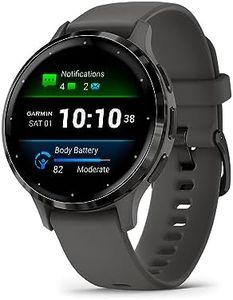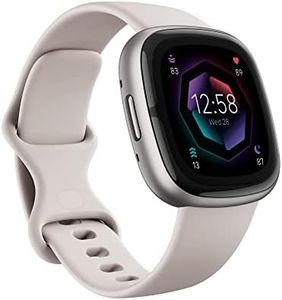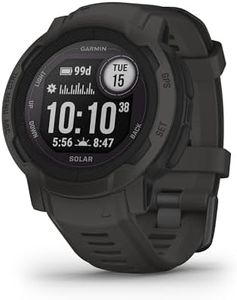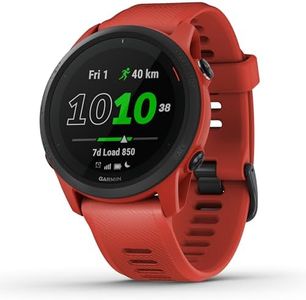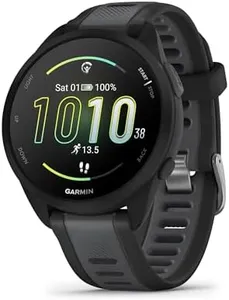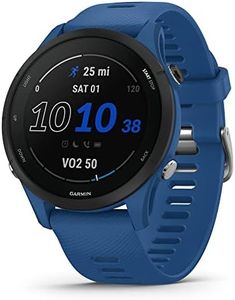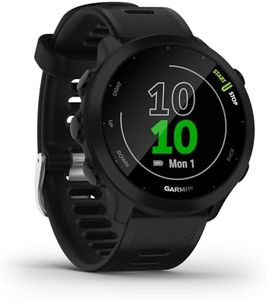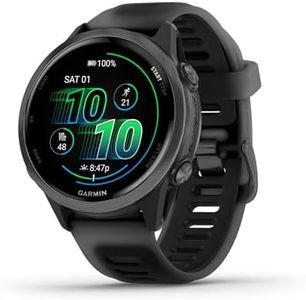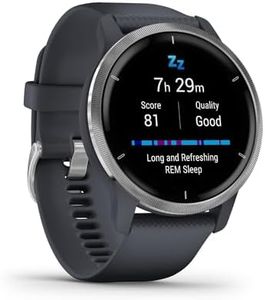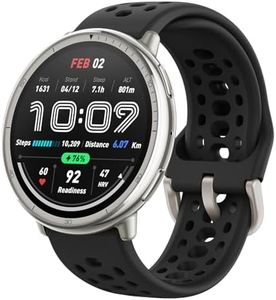We Use CookiesWe use cookies to enhance the security, performance,
functionality and for analytical and promotional activities. By continuing to browse this site you
are agreeing to our privacy policy
10 Best Gps Running Watches
From leading brands and best sellers available on the web.Buying Guide for the Best Gps Running Watches
When choosing a GPS running watch, it's important to focus on how the device matches your workout style, fitness goals, and everyday activity. The best watch for you will not only track your runs accurately but also fit comfortably on your wrist, have the features you need, and offer useful insights to help you improve or enjoy running more. Before making a choice, think about how often you run, the types of workouts you do, and whether you want the watch to be useful outside of running – like for cycling, hiking, or daily activity tracking.GPS AccuracyGPS accuracy determines how correctly the watch tracks your location, distance, and pace. Having good accuracy is important if you want reliable stats, especially if you plan to do interval training or run in areas with winding routes or tall buildings. GPS accuracy can be affected by the quality of the receiver inside the watch. Simpler models may only connect to one satellite system, making them less accurate in challenging areas, while more advanced ones use multiple systems for better reliability. Pick high accuracy if you're serious about tracking precise distances and performance, but if casual tracking is enough, most standard GPS sensors will meet your needs.
Battery LifeBattery life refers to how long the watch can operate before needing a recharge, especially while using GPS. This is crucial if you plan long runs, trail races, or multi-day activities. Basic watches may last a few hours on GPS mode, while advanced models last up to several days. For daily runs of an hour or less, most watches will suffice, but for marathons, ultra-running, or adventure trips, choose a model with extended battery performance.
Heart Rate MonitoringHeart rate monitoring shows how hard your body is working by measuring beats per minute, either from the wrist (optical sensor) or a chest strap. This feature can inform your training intensity and recovery, and it's essential for runners who train with heart rate zones. Wrist sensors are convenient and fine for general usage, but for the most accurate readings during intense workouts or interval training, a watch that can pair with a chest strap is better. Decide if heart rate training is important to you and pick a watch with suitable options.
Water ResistanceWater resistance measures how much exposure to water your watch can handle, affecting whether you can safely use it in the rain, during sweaty workouts, or while swimming. Water resistance is often rated in meters – such as 30m, 50m, or 100m. Watches rated for 50m or more are generally safe for running in the rain or even swimming. If you plan to swim or run in all weather, get a higher water resistance; for occasional use in light rain, a lower rating is sufficient.
Display and InterfaceThe display of a running watch impacts how easily you can see your stats on the go. Consider screen size, brightness, and whether it supports always-on mode. Touchscreens are easier to use, but physical buttons are often more reliable during sweaty or wet conditions. If you want to quickly glance at your pace or distance while running, pick a big, clear screen with good outdoor visibility. Simpler displays may be fine if you run in daylight and don't need data-heavy screens.
Smart FeaturesSmart features include things like smartphone notifications, music controls, NFC payments, and third-party app support. These extras can make your watch more useful in daily life. If you like to leave your phone behind, consider features like onboard music and payment capabilities. But if you just want to run and track your stats, basic smart features are enough.
Training and Analysis ToolsTraining and analysis tools refer to in-built features like interval timers, custom workouts, recovery tracking, VO2 max estimates, and race predictors. These tools help you structure training and review your performance for improvement. If you follow structured plans or want in-depth stats, choose a device with advanced analytics features. If you just want to track runs and monitor progress casually, a simpler watch may be easier to use.
Comfort and FitComfort is critical for a running watch since you'll wear it for long periods and during sweaty workouts. Watch size, weight, and the type of strap all play a role here. Light and slim watches are more comfortable for small wrists or long runs. Try to get a watch with an adjustable, soft strap and a case size that fits your wrist comfortably, so it doesn't move around or cause irritation during activity.
